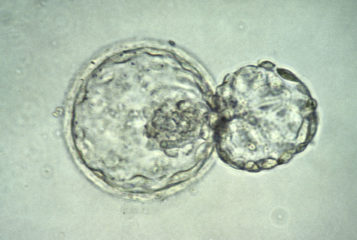An effective treatment for heart disease has been brought closer to reality thanks to work published last week in the journal Nature. Dr Kenneth Chien and colleagues at the Massachusetts General Hospital, Boston, US, have identified a specific embryonic stem cell (ES cell) that gives rise to each of the various tissues that make up the heart. The finding explains how hearts develop.
Heart disease is the world's highest cause of death. No miracle-cure exists, nor are drugs - like beta-blockers and statins - entirely efficacious, as underlying tissue damage is the cause. Stem cell therapy is under intense investigation, yet the majority of methods rely on adult stem cells, which demonstrate a limited capacity to develop into any kind of tissue.
Three years ago, Chien et al reported in the journal Cell the existence of bona fide heart progenitor cells in mouse embryos. These, he demonstrated, are the specific ES cells that divide and divide until a functional heart is formed. They were dubbed ISL1 cells because they produce a particular protein that modulates DNA.
Now the same team has identified and extracted the very same cells from human embryos. Whereas in mice the cells exist for just a couple of days, in humans they exist for three weeks. Given, then, that the heart naturally 'grows' in a gradual fashion, injecting these cells - rather than adult stem cells - into a damaged heart might mimic the heart's natural development process.
However technology lags frustratingly behind the theory. The ISL1 cells are difficult to isolate; they are only distinguishable by the presence of a protein that is secluded deep within the cell. 'When you are identifying progenitors like this, the first question is, 'is it possible to isolate these cells selectively and use them [to treat patients]'', says Phillipe Menasche, a heart surgeon at the Georges Pompidou European Hospital in Paris, France, who has also conducted stem cell studies into heart disease.
Chien is optimistic the cells might still be useful in the short-term. 'Since these cells are entirely human, you can use this system now to study the role of specific genes in human heart disease, and as ways to screen drugs for cardiotoxicity and for therapeutic effect'. Pharmaceuticals inevitably waste substantial amounts of time and money in the search for therapies that ultimately transpire to be unsafe in humans.
Scientists at the University of Maryland, US, last year reported that individuals in a study carrying a mutated version of the APOC3 gene showed decreased risk of heart disease, as they metabolised fats in the bloodstream more rapidly than those without the mutation.





Leave a Reply
You must be logged in to post a comment.